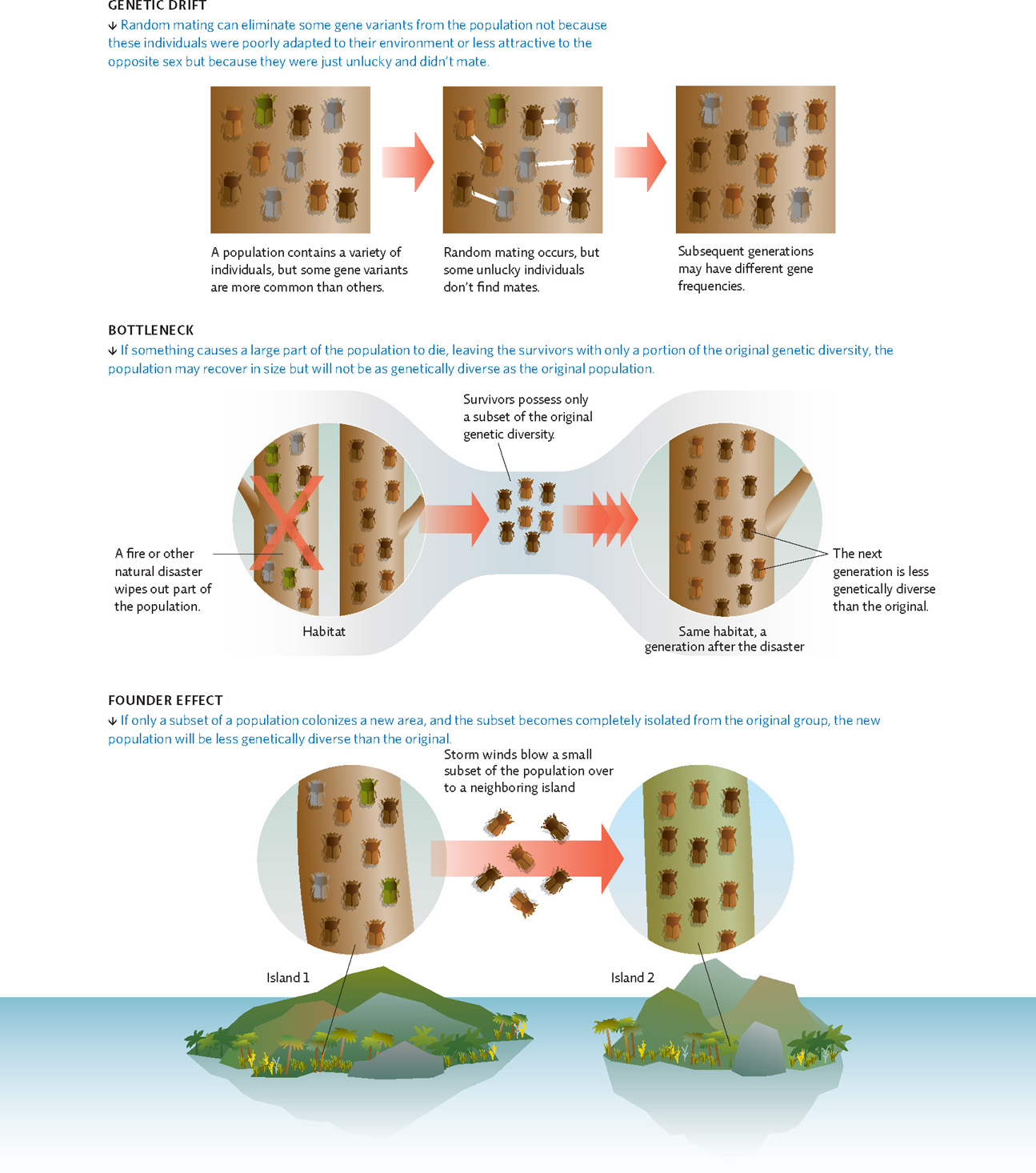Populations can diverge into subpopulations or new species.
If some individuals of the bridled white-eye or other extinct species had been able to avoid the snake (perhaps due to a heritable trait that made them more wary of the predator), they might have given rise to new populations that could cohabitate with the snake. Or, had they not been surrounded by sea, the Guam birds may have been able to relocate and find a safe haven from the brown tree snake.
When populations diverge because of isolation, food availability, new predators, or habitat fragmentation such that their members can no longer freely interbreed, new species may arise (speciation). This increases species diversity in a community and sometimes produces specialists that can exploit open niches. This separation may be physical (for example, geographic boundaries the individuals won’t cross) or may arise when something prevents some individuals from choosing others as mates, as may happen when individuals spend their time in different parts of their habitat.
However, not all evolution is driven in this manner. Random events play a role, too, typically by decreasing genetic diversity rather than increasing it.
In any population, some individuals will survive and mate, and others won’t. For no other reason than pure chance, this random mating may increase or decrease the frequency of a particular trait, a process known as genetic drift. The loss of this trait doesn’t have anything to do with any inherent advantage or disadvantage the trait offers; it is merely the chance loss of some gene variants because the individuals with these genes did not happen to mate. This can produce significant changes, especially in small populations where traits that may be present in just a few could be lost in a single generation if these individuals don’t happen to reproduce.
genetic drift
The change in gene frequencies of a population over time due to random mating that results in the loss of some gene variants.
Genetic drift can produce a new population that is different from the original population when only a subset of the original variants reproduce. The bottleneck effect occurs when a portion of the population dies, perhaps because of a natural disaster like a flood or because of a strong new selective pressure like the introduction of a new predator. The survivors then produce a new generation, and any alleles found only in the deceased individuals are lost from the population forever.
bottleneck effect
The situation that occurs when population size is drastically reduced, leading to the loss of some genetic variants, and resulting in a less diverse population.
The founder effect is seen when a small group that contains only some of the gene variants found in the original population becomes physically isolated from the rest. Even if these individuals do not have the most adaptive traits, natural selection takes over, favoring the best adaptations in the founding group, and producing a subsequent population that is likely to be different from the original population. (See Chapter 12 for more on the effect of isolation.)
founder effect
The situation that occurs when a small group with only a subset of the larger population’s genetic diversity becomes isolated and evolves into a different population, missing some of the traits of the original.
Today, human impact increases instances of both the founder effect and the bottleneck effect. Much of what we do isolates populations into smaller groups, forcing them into these situations. INFOGRAPHIC 11.5


How is the bottleneck effect similar to and different from the founder effect?
Both events occur when an original population is somehow reduced in size and genetic diversity. The difference is a spatial one - the bottleneck effect occurs within the original habitat when the original population is reduced in size because some members are killed whereas the founder effect occurs when a subset of the original population is separated from the original one and colonizes a new location.